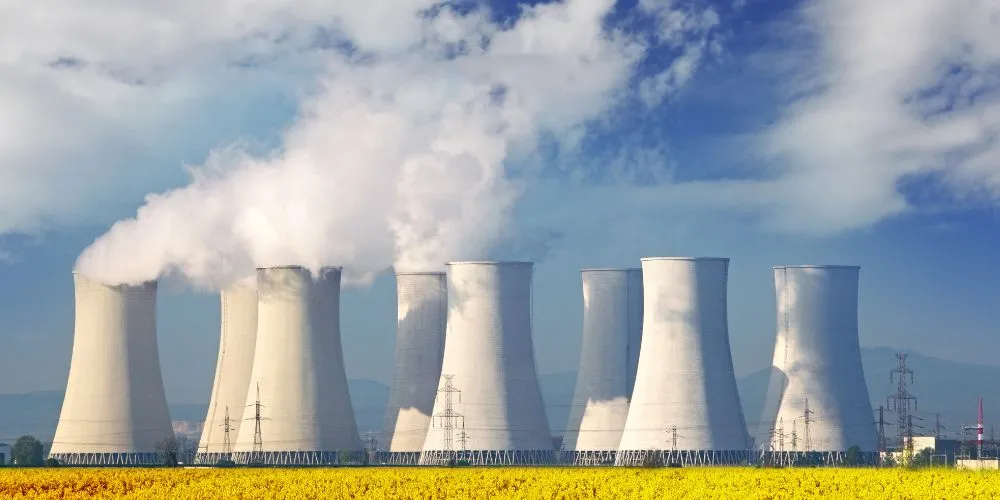Nuclear power plants have been a cornerstone of the global energy landscape, providing a significant source of electricity. The nuclear power plant market is undergoing careful analysis due to its pivotal role in meeting the world’s growing energy demands. This article explores the current state of the nuclear power plant market, examining key trends and challenges and outlining a future outlook.
Market Overview
The global nuclear power plant market addresses the increasing demand for clean and reliable energy. These plants utilize nuclear reactions to generate electricity, offering a sustainable alternative to traditional fossil fuel-based power sources. Nuclear power contributes to a low-carbon energy mix, promoting environmental sustainability.
Nuclear power plants are diverse, ranging from traditional pressurized water reactors (PWRs) to advanced reactor technologies. The market covers various aspects, including reactor types, fuel cycles, and safety measures. With a focus on reducing carbon emissions and ensuring energy security, nuclear power remains a vital component of the global energy portfolio.
The approximate decision of the Techgolly market research team is the global nuclear power plant market size was valued at least USD 45 billion in 2023 and continues to be projected to reach up to USD 63 billion by 2030. The growth will continue at a compound annual growth rate (CAGR) of 3% to 5% from 2023 to 2030.
Key Market Trends
The nuclear power plant market is evolving with several significant trends:
Advanced Reactor Technologies
Innovations in advanced reactor technologies are reshaping the nuclear power landscape. Small modular reactors (SMRs) and Generation IV reactors offer enhanced safety features, improved efficiency, and reduced environmental impact. These technologies address concerns associated with traditional reactors, paving the way for a more sustainable nuclear energy future.
Digitalization and Automation
Digitalization and automation are becoming integral parts of nuclear power plant operations. Implementing smart technologies enhances safety, efficiency, and maintenance processes. From advanced control systems to predictive analytics, digital solutions optimize plant performance and ensure regulatory compliance.
International Collaboration
Global collaboration is increasing in the nuclear power sector. Countries are joining forces to share expertise, resources, and research, fostering the development of standardized safety protocols and best practices. International cooperation promotes the responsible and secure use of nuclear energy globally.
Focus on Nuclear Fusion
Exploring nuclear fusion as a clean and limitless energy source is gaining momentum. Research and development efforts are underway to unlock the potential of fusion reactors, offering a new frontier in sustainable energy. While fusion is still in the experimental stage, advancements in this field could revolutionize the future of nuclear power.
Challenges
Despite its potential, the nuclear power plant market faces several challenges:
Public Perception and Safety Concerns
Public perception of nuclear power, fueled by safety concerns and historical incidents, remains challenging. Building public trust through transparent communication, stringent safety measures, and education is essential for continuing nuclear energy acceptance.
High Initial Costs
The high upfront costs associated with nuclear power plant construction pose a financial barrier. Overcoming this challenge requires strategic financing models, government support, and advancements in construction technologies to reduce the overall cost of building and maintaining nuclear facilities.
Nuclear Proliferation Risks
The potential for nuclear proliferation poses geopolitical challenges. Strict international controls and non-proliferation agreements are critical to ensuring that nuclear technology is used for peaceful purposes and preventing the spread of nuclear weapons.
Future Outlook
The nuclear power plant market holds promise for the future, with several key developments anticipated:
Advancements in Small Modular Reactors
Small modular reactors (SMRs) are expected to play a significant role in the future of nuclear power. These compact and versatile reactors offer scalability, quicker deployment, and improved safety features. The widespread adoption of SMRs could reshape the dynamics of the nuclear energy sector.
Integration of Renewable Energy
Integrating nuclear power with renewable energy sources like solar and wind will contribute to a more diversified and resilient energy grid. Hybrid energy systems that combine nuclear and renewables aim to provide a stable and sustainable power supply, addressing the intermittency challenges associated with some renewable sources.
Continued Research in Nuclear Fusion
Ongoing research and development in nuclear fusion hold the potential for a breakthrough in clean energy production. If successful, nuclear fusion could offer a revolutionary and nearly limitless power source, further solidifying the role of nuclear energy in a sustainable future.
Conclusion
The nuclear power plant market stands at the crossroads of challenges and opportunities. Addressing safety concerns, embracing technological innovations, and fostering international collaboration are crucial for ensuring nuclear power’s continued growth and sustainability. As the world strives for a low-carbon future, nuclear energy remains a key player in the global energy transition, providing a reliable and efficient source of electricity. Navigating the complexities of the market and capitalizing on emerging trends will be essential in realizing the full potential of nuclear power for a cleaner and more sustainable energy landscape.












